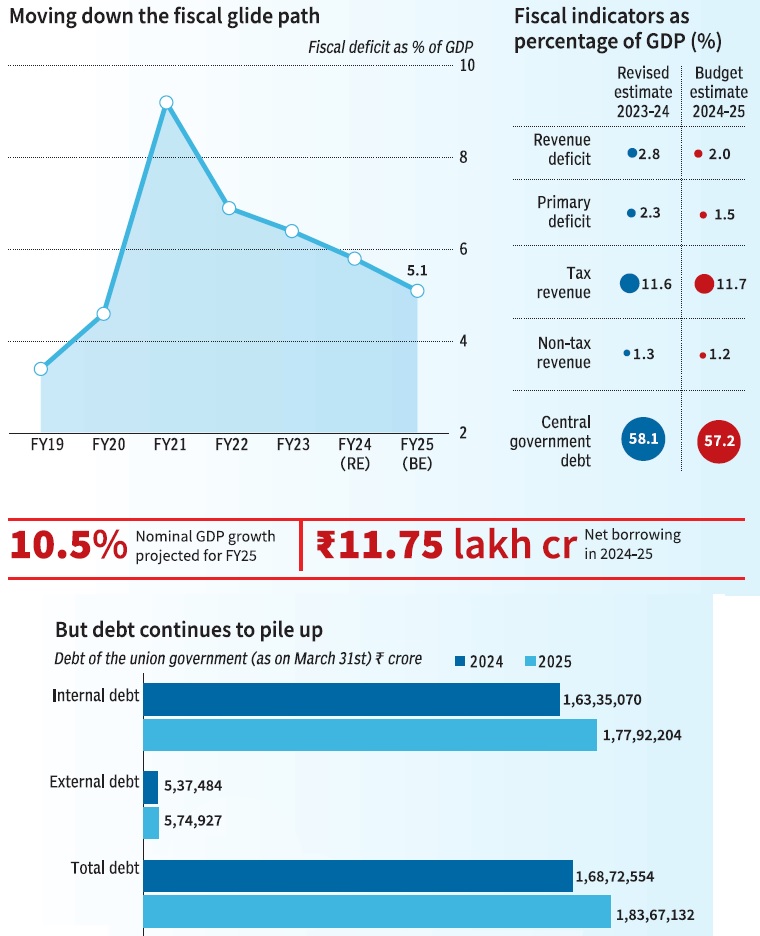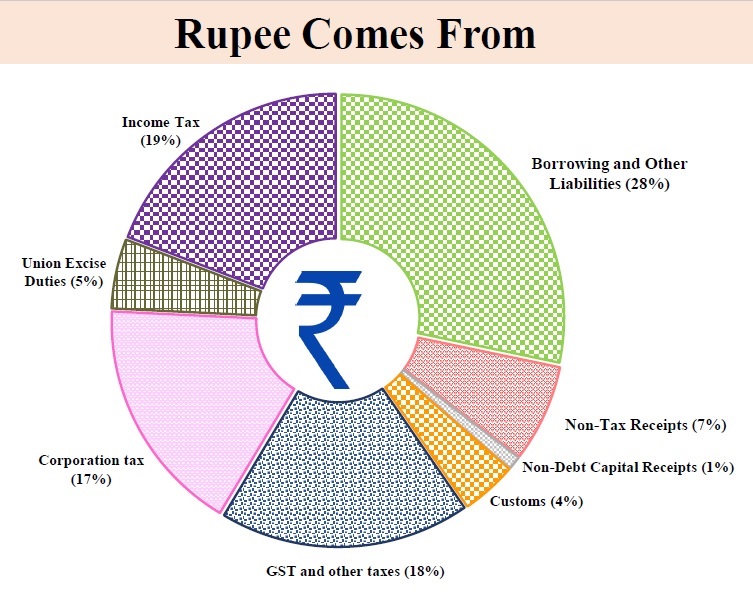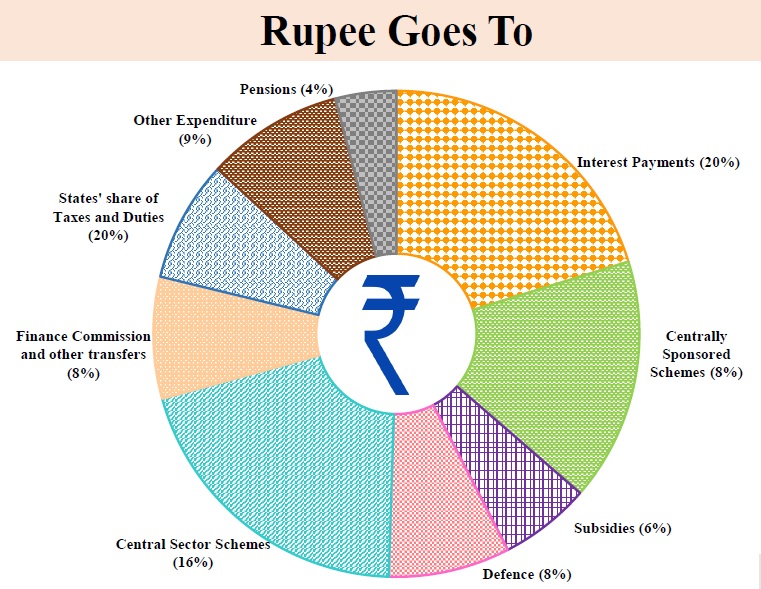7667766266
enquiry@shankarias.in
To know about Part-1, click here

|
Revised Estimates 2023-24 |
|
|
Total receipts other than borrowings |
27.56 lakh crore |
|
Tax receipts |
23.24 lakh crore |
|
Total expenditure |
44.90 lakh crore |
|
Revenue receipts |
30.03 lakh crore |
|
Fiscal deficit |
5.8% of GDP |
|
Budget Estimates 2024-25 |
|
|
Total receipts other than borrowings |
30.80 lakh crore |
|
Tax receipts |
26.02 lakh crore |
|
Total expenditure |
47.66 lakh crore |
|
Estimated fiscal deficit |
5.1% of GDP ( Aims to reduce fiscal deficit below 4.5 % by 2025-26) |
|
|
|
Tax proposals
Direct taxes
Indirect Taxes


References